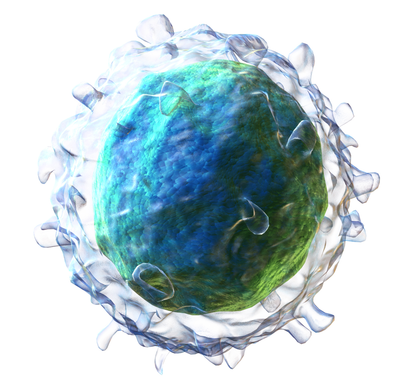Difference Between Leukocytes and Lymphocytes
The key difference between leukocytes and lymphocytes is that leukocytes are a type of blood cells that are colourless and circulate through blood and body fluids while lymphocytes are a type of white blood cells that are agranulocytes.
Blood is a special type of connecting tissue composed of a fluid matrix called plasma and several kinds of cells and other formed elements that circulate within the plasma. Blood has many functions including transportation, regulation, and protection. Moreover, there are three types of formed elements of blood cells and cell fragments: erythrocytes, leukocytes, and platelets. Each element of blood has a specific task in the process of maintaining the body’s health and homeostasis. Furthermore, all cells and other elements develop from multipotent stem cells. We also call leukocytes as white blood cells. Lymphocytes are one of the five types of leukocytes.
CONTENTS
1. Overview and Key Difference
2. What are Leukocytes
3. What are Lymphocytes
4. Similarities Between Leukocytes and Lymphocytes
5. Side by Side Comparison –Leukocytes vs Lymphocytes in Tabular Form
6. Summary
What are Leukocytes?
Leukocytes are also referred to as white blood cells. They represent less than 1% of the cells in human blood. These leukocytes are larger than erythrocytes and contain nuclei inside the cell body. Leukocytes are also present in interstitial (tissue) fluid in addition to blood plasma since they can migrate out of blood capillaries through the intercellular spaces into the fluid. Depending on the staining properties of granules in the leukocyte plasma, we divide them into two categories as granular leukocytes and nongranular leukocytes.

Figure 01: Leukocytes
Granular leukocytes include neutrophils, eosinophils, and basophils; all these have granules in their cytoplasm. Nongranular leukocytes include monocytes and lymphocytes; they do not contain the granules in their cytoplasm. Furthermore, each type of leukocyte has a specific function in defending against invading microorganisms and other foreign substances. Among these cells, neutrophils are the most numerous, followed in order by lymphocytes, monocytes, eosinophils, and basophils.
What are Lymphocytes?
In humans, lymphocytes arise from lymphoid stem cells. Lymphocytes are mainly responsible for carrying out adaptive immunity responses in humans. Additionally, these cells have receptor proteins on their surfaces that can recognize specific antigens and direct immune response against them. There are two types of lymphocytes: B lymphocyte cells and T lymphocyte cells.

Figure 02: Lymphocyte
B cells respond to antigens by secreting antibodies or immunoglobulin and are responsible for humoral immunity. T-cells are responsible for cell-mediated immunity. They do not produce antibodies. Instead, immune responses are regulated by directly attacking and destroying specific antigens. The cytoplasm of the lymphocyte usually does not contain large granules. Furthermore, it is possible to identify these cells easily as they have a large nucleus surrounded by a small amount of cytoplasm.
What are the Similarities Between Leukocytes and Lymphocytes?
- Leukocytes and lymphocytes are components of blood.
- Both of them involve in the immunity of vertebrates.
- Moreover, they originate from the same multipotent hematopoietic stem cells.
What is the Difference Between Leukocytes and Lymphocytes?
Leukocytes refer to all types of white blood cells present in the blood. Whereas, lymphocytes are one of the five types of white blood cells. So, this is the key difference between leukocytes and lymphocytes. Furthermore, another key difference between leukocytes and lymphocytes is that the leukocytes include both granulocytes and agranulocytes while all lymphocytes are agranulocytes.
Moreover, leukocytes involve in both innate and adaptive immunity while lymphocytes involve only in adaptive immunity. Therefore, this is also a difference between leukocytes and lymphocytes. Additionally, there are five types of leukocytes: neutrophils, basophils, eosinophils, lymphocytes and monocytes while lymphocytes are two types: B lymphocytes and T lymphocytes.
The below illustration tabulates the difference between leukocytes and lymphocytes, comparatively.

Summary – Leukocytes vs Lymphocytes
Leukocytes are commonly referred to as white blood cells. They are the colourless cells of the blood that are involved in innate and adaptive immunity. There are five major types of leukocytes and lymphocytes are one of the five types of white blood cells. Furthermore, they are agranulocytes; however, most white blood cells are granulocytes. Lymphocytes help in adaptive immunity while other leukocytes help in innate immunity. There are mainly two types of lymphocytes: B lymphocytes and T lymphocytes. Thus, this is a summary of the difference between leukocytes and lymphocytes.
Reference:
1. “White Blood Cell.” Wikipedia, Wikimedia Foundation, 17 Oct. 2018, Available here.
2. “Lymphocyte.” Encyclopædia Britannica, Encyclopædia Britannica, Inc., 15 Dec. 2017, Available here.
Image Courtesy:
1. “1916 Leukocyte Key” By OpenStax College – Anatomy & Physiology, Connexions Web site, Jun 19, 2013. (CC BY 3.0) via Commons Wikimedia
2. “Blausen 0624 Lymphocyte B cell” By “Medical gallery of Blausen Medical 2014”. WikiJournal of Medicine 1 (2). DOI:10.15347/wjm/2014.010. ISSN 2002-4436. – Opus proprium (CC BY 3.0) via Commons Wikimedia
ncG1vNJzZmivp6x7pbXFn5yrnZ6YsqOx07CcnqZemLyue8OinZ%2Bdopq7pLGMm5ytr5Wau264xK6iqJupqbK0ecCnm2auo2K5urnPoaacsaSawHA%3D